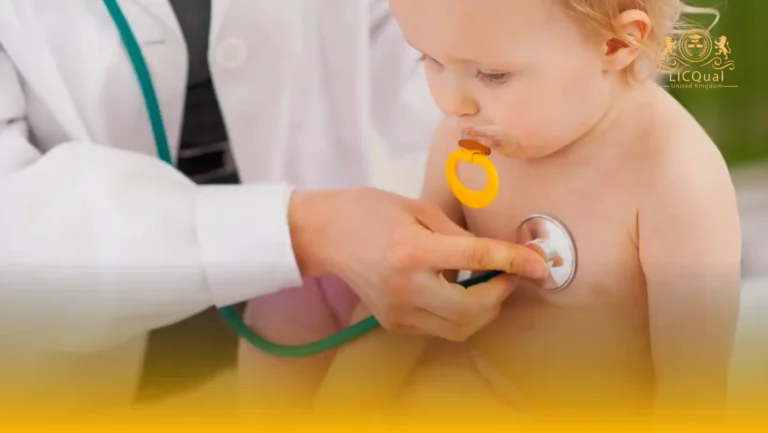The LICQual Level 3 Certificate in Basic Life Support (BLS) Training is an advanced and comprehensive course tailored for individuals who want to gain deeper knowledge and practical experience in life-saving techniques. This course is ideal for healthcare professionals, emergency responders, and those in high-risk workplaces, offering advanced training in Basic Life Support (BLS) procedures. By the end of the course, participants will be equipped with the necessary skills to handle a wide range of medical emergencies, confidently providing essential care to those in need.
The LICQual Level 3 Certificate in Basic Life Support (BLS) Training covers all critical aspects of Basic Life Support, focusing on advanced CPR techniques, managing choking incidents, and using an Automated External Defibrillator (AED). Over the course, participants will gain practical hands-on experience in performing CPR on adults, children, and infants, along with mastering airway management and casualty assessment. The training also includes dealing with life-threatening conditions such as severe bleeding, shock, and cardiac arrest.
Ideal for those working in healthcare settings, emergency services, and high-risk environments, this certification is recognized for its thorough, professional-level training. The LICQual Level 3 Certificate in Basic Life Support (BLS) Training ensures that participants are not only ready to provide life-saving care but also understand the legal and ethical responsibilities involved. Whether you are looking to enhance your career or fulfill mandatory workplace requirements, this course offers the expertise and certification you need to respond effectively in critical situations and potentially save lives.
Course Overview
Qualification Title
LICQual Level 3 Certificate in Basic Life Support BLS Training
Total Units
6
Total Credits
24
GLH
120
Qualification #
LICQ2200218
Qualification Specification
To enroll in the LICQual Level 3 Certificate in Basic Life Support BLS Training, applicants must meet the following criteria:
|
Qualification# |
Unit Title |
Credits |
GLH |
|---|---|---|---|
|
LICQ2200218-1 |
Advanced CPR Techniques |
4 |
20 |
|
LICQ2200218-2 |
Managing Severe Airway Obstruction |
4 |
20 |
|
LICQ2200218-3 |
Use of AED in Different Scenarios |
4 |
20 |
|
LICQ2200218-4 |
Scene Assessment and Immediate Care |
4 |
20 |
|
LICQ2200218-5 |
Managing Medical Emergencies in a Workplace or Public Setting |
4 |
20 |
|
LICQ2200218-6 |
Post-Emergency Management and Care |
4 |
20 |
By the end of this course, learners will be able to:
1. Advanced CPR Techniques
- Demonstrate advanced CPR techniques for adults, children, and infants, including modifications for different age groups and conditions.
- Apply effective chest compressions, rescue breaths, and coordinated CPR interventions in a variety of emergency situations.
- Recognize when advanced CPR measures should be initiated and how to modify your approach based on the casualty’s response.
- Understand the importance of high-quality CPR in improving the survival rate of victims of cardiac arrest.
2. Managing Severe Airway Obstruction
- Identify signs of severe airway obstruction in both conscious and unconscious individuals.
- Perform advanced techniques to relieve airway obstructions, including abdominal thrusts, back blows, and the proper use of medical devices when applicable.
- Safely manage and treat severe airway blockages in adults, children, and infants.
- Understand the priority of airway management and the appropriate interventions required in different emergency scenarios.
3. Use of AED in Different Scenarios
- Understand the role and functionality of an Automated External Defibrillator (AED) in treating victims of cardiac arrest.
- Demonstrate the correct usage of AEDs, including how to position electrodes and interpret the device’s analysis.
- Respond appropriately to different cardiac arrest scenarios, determining when and how to use an AED effectively.
- Integrate AED use with CPR to provide continuous, life-saving care during a medical emergency.
4. Scene Assessment and Immediate Care
- Conduct an effective scene assessment to ensure safety for both the casualty and the rescuer in an emergency situation.
- Recognize potential hazards at the scene of an emergency and take immediate steps to mitigate risks.
- Prioritize immediate care needs by evaluating the severity of the casualty’s condition and determining the most appropriate first aid intervention.
- Communicate effectively with bystanders and emergency services during the initial stages of an emergency.
5. Managing Medical Emergencies in a Workplace or Public Setting
- Identify common medical emergencies that can occur in the workplace or public settings, including heart attacks, strokes, severe allergic reactions, and injuries.
- Apply appropriate first aid protocols and life-saving techniques in response to a range of medical emergencies.
- Understand the importance of first aid and BLS procedures in ensuring workplace safety and compliance with health regulations.
- Maintain a calm, clear approach when managing medical emergencies in public or work environments, ensuring swift and effective care.
6. Post-Emergency Management and Care
- Understand the importance of post-emergency care to prevent complications and provide continuous support until medical professionals arrive.
- Monitor the casualty’s condition after initial first aid or life-saving interventions and make adjustments as needed.
- Provide psychological support to casualties, offering reassurance and comfort after an emergency situation.
- Be familiar with the procedures for handing over the casualty to emergency medical services (EMS) with clear and accurate information.
This diploma is ideal for:
Assessment and Verification
All units within this qualification are subject to internal assessment by the approved centre and external verification by LICQual. The qualification follows a criterion-referenced assessment approach, ensuring that learners meet all specified learning outcomes.
To achieve a ‘Pass’ in any unit, learners must provide valid, sufficient, and authentic evidence demonstrating their attainment of all learning outcomes and compliance with the prescribed assessment criteria. The Assessor is responsible for evaluating the evidence and determining whether the learner has successfully met the required standards.
Assessors must maintain a clear and comprehensive audit trail, documenting the basis for their assessment decisions to ensure transparency, consistency, and compliance with quality assurance requirements.







